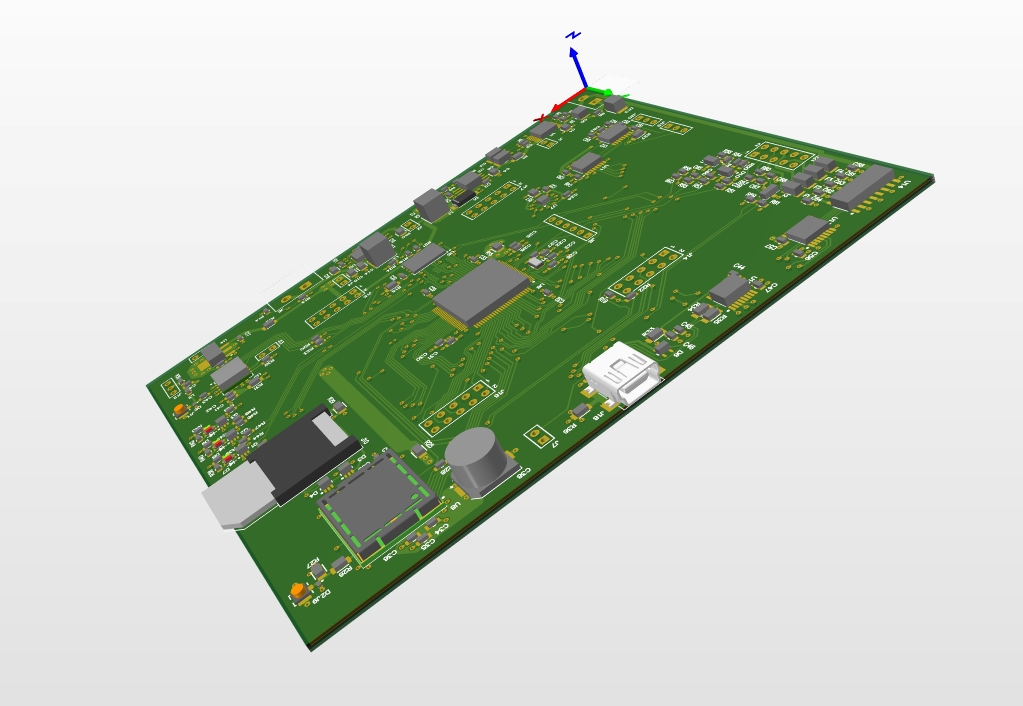IntelliTrac Welcomes Onshore Manufacturing
At IntelliTrac we are super excited to announce that from early 2021 we will be locally manufacturing, researching & designing all of our telematics hardware devices onshore in Australia.
Recently, the Australian Federal Government released a statement sighting an aim of pumping a whopping $1.5 Billion into Australia’s manufacturing sector and outlining plans to strengthen supply chains amidst shoring up local production. There has evidently never been a better time to produce locally and for the Australian leader in telematics, it really became a ‘no brainer’ to start manufacturing at home.
In light of the COVID-19 pandemic crisis, we at IntelliTrac have identified a number of potential difficulties in relying on offshore manufacturing. These challenges, whether it be a language barrier, designing misprint or a logistical transporting error can all have a severe impact on the way we as a business operate.
Engaging with an outsourced operation can provide the potential for an impediment towards our progression and success as a company. Not only can outsourcing potentially hinder our operations and our bottom line, but it can also severely hurt our customers experience with us and in-turn challenge them in their progression. Thus, by offering an onshore production and development, we can provide our customers with the benchmark solution in Australia for GPS tracking and telematics solutions without the implications or reliance of a foreign 3rd party.
Initially, the 1st phase of implementing a locally acquired manufacturing set-up would be a daunting operation for many small businesses. Ensuring that stock is on hand, suppliers are reliable and physically creating our hardware could only be achieved by our hard-working team. We have identified by manufacturing at home that there is an abundance of qualified, hardworking Australians that can successfully implement any research, manufacturing and design plan put to them.
Employing staff locally and keeping our chain of business all local has seen numerous benefits over outsourcing to a foreign country.
We see staff co-collaborate more successfully and enjoy bonding over work which leaves staff more confident in their abilities and ensures a lift in morale for the whole company leading to a higher quality output of production.
We also find it a lot easier to manage staff, track the progress of tasks and initiatives that have been set out. The cooperation between staff expands 10-fold to adhere and work to a strict timeline, due by dates and certain rollouts for our clients. This level of management can only be dreamt of when looking at outsourcing.
We also notice that keeping the design of our products local brings to the Australian market a product that will cater to what Australian businesses actually require. Rather than a generic ‘Made in China’ product that might not suit the Australian buyer, designing in-house is a blessing to ensure complete accountability to our Australian client's requirements.

An example of a custom made pcba, one major benefit of onshore manufacturing.
This works well with in house customisation, since it’s produced at home, we can make customisable products for our clients without having to deal with the long tail communication transmissions of explaining ourselves to foreign manufactures. The possibilities are endless in relation to customisation as there are no real limitations on customisation apart from the wild imagination. We also, time-wise, don’t have to wait for months on months for output and delivery of the product. This ensures a quicker turnaround time for our client's requests and of course a more satisfied customer.
Significantly, an important aspect of home-grown manufacturing is the ability to devise a higher standard of quality control with all of our products. Quality control now becomes a more transparent procedure as hardware must pass numerous checkpoints before leaving the warehouse.
The benefits of in-house quality control far surpass those of the outsourced procedure as many shortcuts are often taken abroad to save time and costs, which ultimately can lead to more headaches upon arrival to our shores. At the end of the day, we only want to install a tracking device once for our customer and ensure them we won’t be back to re-install it again.
With Australia’s manufacturing industries contributing around $100 billion to the Australian GDP per year and employing almost 1 million Aussies there has never been a better time to be producing at home. The economic and financial benefits stand out when a company says, ‘Made in Australia’.

However, it’s the reliance on supply channels that becomes a lot easier to control when sourcing other locally produced items. There are no illusions, misconceptions or cat and mouse games when sourcing locally, which in our experience following up suppliers in a foreign country can sometimes be a time-consuming task. There are also more implications in regard to regulations and legislation covering employers and suppliers at home which it allows for more confidence in the local supply market and legal backing to fall on if anything were to go wrong.
We’ve fortunately enough employed some great local talent over the years and our current Hardware & Firmware Engineer, Lachlan Marshall who will be designing and developing our tracking hardware in-house plays a major role in improvements in our product and quality that we produce to market.
Lachlan gave us some insight into what he sees currently and what benefits a company like IntelliTrac bringing manufacturing back home can achieve:
“Obviously being able to put “Australian made” on our branding should definitely play well with Australian customers, and even overseas customers would hopefully consider something engineered by a reputable Australian company to be of a high standard, as opposed to a nameless company in Asia. I would imagine that it would also open up some doors for high-security contracts, a customer who are wary to use Chinese trackers for instance (or just not allowed to, like military/government). Obviously, Australia’s dependency on China and other sources of cheap technology, labour and manufacturing is a big political/social issue right now, and people are conscious that we shouldn’t be giving them control over all our data. Our devices are literally trackers, so it’s probably even more relevant to us than other technological sectors.”
“A big advantage to manufacturing in-house is that it gives IntelliTrac far better control over our products. We decide the exact spec, we decide the quality control standards, we decide the exact budget and pricing, and we consider all trade-offs and requirements directly based on information that we have from working directly with the end customer. If we didn’t design in house, we would either have to pay exorbitant amounts to have something custom-designed to our specific needs or settle for an off-the-shelf solution that may or may not be “good enough”.”
“It’s also way more efficient, which directly leads to better customer satisfaction and better reputation – if they have a hardware or software feature request, it comes directly to us, we implement, test, and ship it. If we continue to outsource the design, there is always a back and forth as we negotiate terms with the third party, then they take a while to implement it, send it back to us to test, we send it back to them with feedback, they take another few weeks, then finally, we ship it to the customer. If the customer has more feedback, the whole process starts again. Designing in-house effectively removes several layers of abstraction which allows better customer support, faster turnarounds, leaner processes, cost savings, and more transparency/accountability.”
“Manufacturing in-house is also a form of risk-mitigation – IntelliTrac is completely reliant on third-parties manufacturing and selling us trackers. What happens if they suddenly decide to drop support for that product, or the business goes under, or they don’t support Australian telco’s, etc.? Fortunately, vehicle tracking hardware is a pretty big market so we could probably find a suitable alternative, but still, good to avoid being dependent on third parties wherever possible. “
“The last thing I can think of is kind of a culmination of all of the above: If we design in house, we own the designs. If there is any issue whatsoever, we have all the source files, technical data, etc. required to diagnose it ourselves, we don’t have to pass the buck, and that means customers know they can trust and rely on us. If we aren’t happy with a certain chipset, we now have the power to change it, quickly and efficiently. If there is an opportunity to innovate, reduce costs, etc., we don’t need to ask someone else to make the hardware for us, we can just do it.









